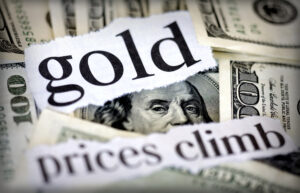Gold Price Is Going to $2,200 as Central Banks Break The Global Economy
The comments below are an edited and abridged synopsis of an article by Thorsten Polleit
There is still plenty of value in the precious metals space, and it’s only a matter of time before gold and silver go higher as investors underprice the risk of a recession this year.
Polleit, expects gold to continue to shine through 2023 as investors look to protect their purchasing power and hedge against growing economic uncertainty.
He sees gold rising to $2,200 with a 2023 average price of $2,000. He sees silver peaking around $29 this year, with an average price of $26.
Polleit is bullish on gold as inflation remains a threat. While consumer prices have fallen since last summer, it is because central bank tightening has reduced the global real money supply, and thus liquidity in the global economy.
The falling money supply ultimately has the same effect on consumers as rising consumer prices.
After unleashing massive amounts of liquidity in 2020, central banks worldwide are now trying to put the genie back in the bottle and, in the process, risk creating a new recession. Since the end of 2019, the Fed’s M2 money supply increased 40% and the ECB’s money supply increased by 25%.
Markets have largely dismissed the idea of a recession as the labour market remains healthy; one reason investors aren’t worried about a recession is because they know the Fed’s hawkish stance will only go so far.
Despite hawkish comments from some Fed members, Polleit doesn’t expect the central bank to achieve rates of 5%. It may cut rates if market turmoil is bad enough.
Also holding aggressive Fed action in check is the US government’s growing debt. In 2021 it cost about $350 billion to service the debt when interest rates were below 1%. If interest rates go to 5% and they have to fund $31 trillion, that is $1.2 trillion in debt.
With a natural cap in interest rates, gold remains an attractive asset. In a traditional portfolio, Polleit doesn’t see any vital role for government bonds.
Polleit likes holding about 60% in globally diversified stocks or ETFs and the other 40% in precious metals.
“If you are wondering if the current gold price is a good buy, I would say that in the long term, gold is still cheap given the current conditions,” he said.

